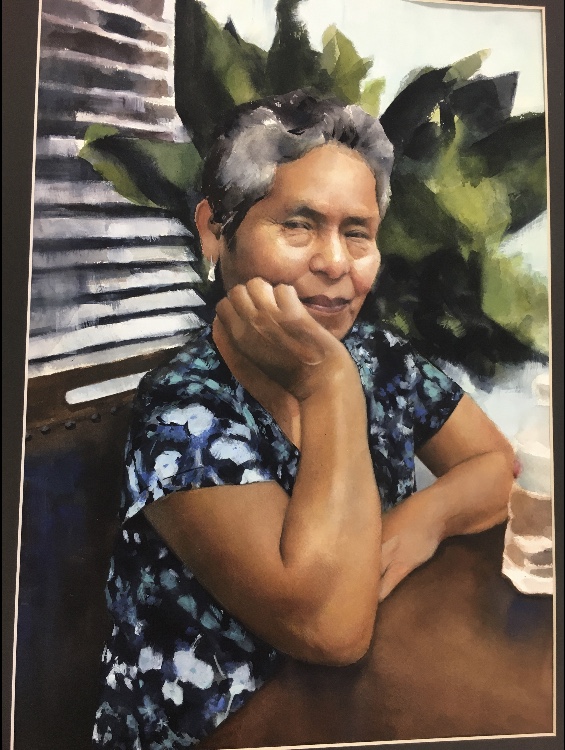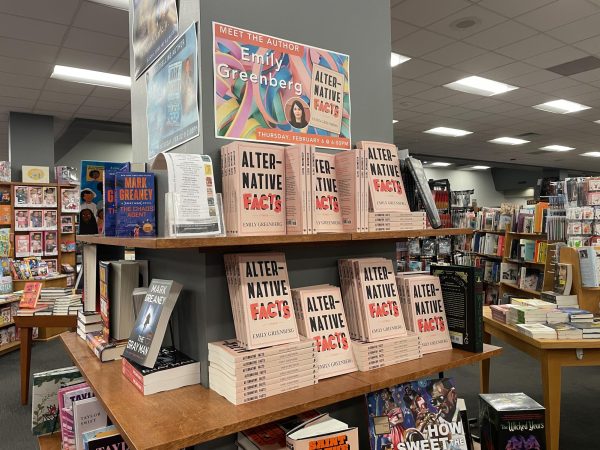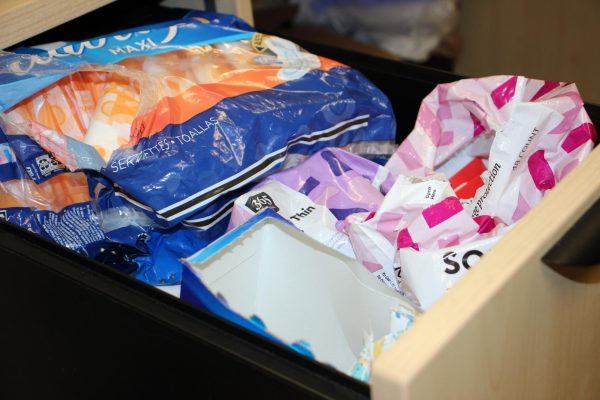Scholastic Art Competition offers valuable opportunities to students
A piece of watercolor art by Anahis Luna (12) for her series showcasing the personalities of family members. It is art like this that earned her several gold keys in the Scholastic Art Competition.
Paint, graphite and countless hours of tireless work. Every year thousands of high school artists from across the U.S. devote vast amounts of time and energy on masterful creative projects to enter the Scholastic Art and Writing Competition. As one of the largest and most competitive fine art competitions in the world, contestants vie for a limited number of awards.
A major appeal of the competition is the sheer diversity of work entered. Artists can enter paintings, drawings, photographs, comics, collages and even fashion designs. Another is the professional judging the competition is known for.
“The judging is top-notch,” AP art teacher Charles Berlin said. “Typically, they pull in working professors from different colleges and universities…and then they pull in professional artists and working professionals like that to judge it. We don’t know who judges it till afterwards. It’s all blind. It’s great … and they don’t know anything about the student. They don’t know any demographic about the student. They don’t know what their name is. They don’t know what school they go to, and all they see is the artwork.”
Competition is fierce, and artists have to work hard to make sure that their work exceeds expectations. There are certain things that contestants can do to ensure that their work pops.
“Winning art tends to have a good composition,” art student Dahlia Townley-Bakewell (10) said. “And you also want something that’s eye catching.”
Another way to stand out is to make the judges feel something through your art. One can accomplish this with thoughtful titling.
“Titling is hugely important because it gives the judges an emotional connection to your work,” said Berlin. “So having a piece of artwork that makes someone feel something for what they’re looking at — it’s really important.”
Luckily, the competition has been online for some time, so most proceedings will not be affected. Even so, some of the festivities that would ordinarily accompany the competition, such as the party for the top winners, will not happen. The fact that the competition is online, regardless of the reason, is troubling for some as well.
“The past eight or nine years it has all been submitted digitally,” said Berlin. “So the judges are not seeing the actual work. And that sort of bothers me, because seeing the actual work and seeing a photograph are two completely different things. As any visual artist will tell you, you can get an idea of something through a picture but to really experience something you have to see it in person.”
The competition is extremely important for many art students because it can open a lot of doors in the industry.
“I was able to get more commissions for my art,” Anahis Luna (12) said. “I was able to have more people know my art, and I’d get people around me telling me, ‘Oh, I’ve seen your art’… I’ve been able to work with a lot of other things and just really be able to expand my art and my presence.”
Luna has won a number of gold key awards, the highest form of award that a student can earn in this competition. For her, the competition was a major confidence boost.
“I feel like winning in general just ups your confidence,” said Luna. “And when I won, I went on to enter so many other competitions and get so much other stuff… it really gives you the confidence to really put yourself out there and try to win things.”
But at the end of the day, the most important step to succeed is simply to enter.
“Just try it, even if you don’t feel that confident in your art,” said Luna. “It’s always more important to just give it a go, because you never know what judges are really gonna like about your work, or what judges are gonna connect with your work. It’s just important to put yourself out there no matter what, even if you’re not that confident in your art you can still win.”
Your donation will support the student journalists of White Station High School. Your contribution will allow us to purchase equipment and cover our annual website hosting costs.






































